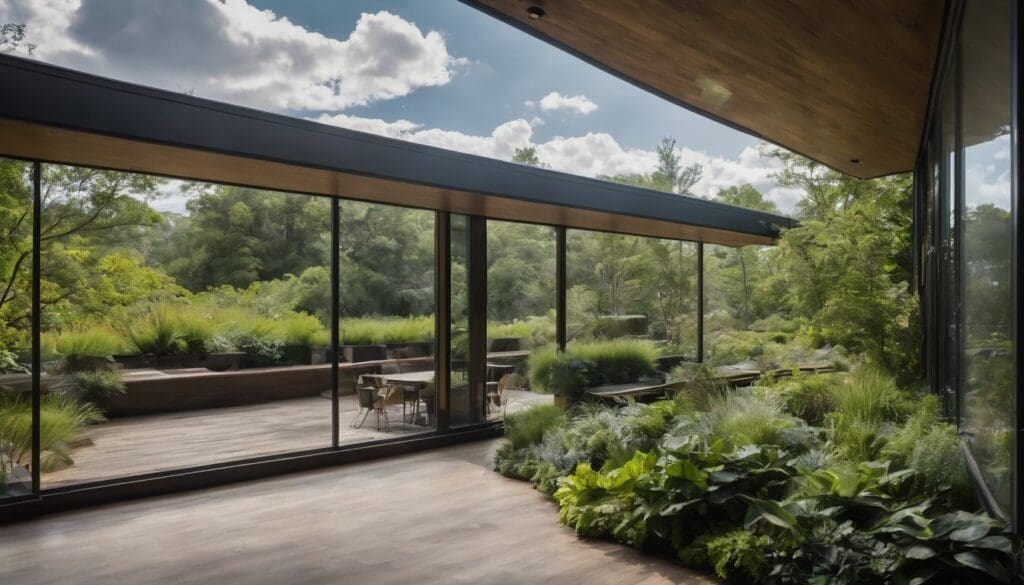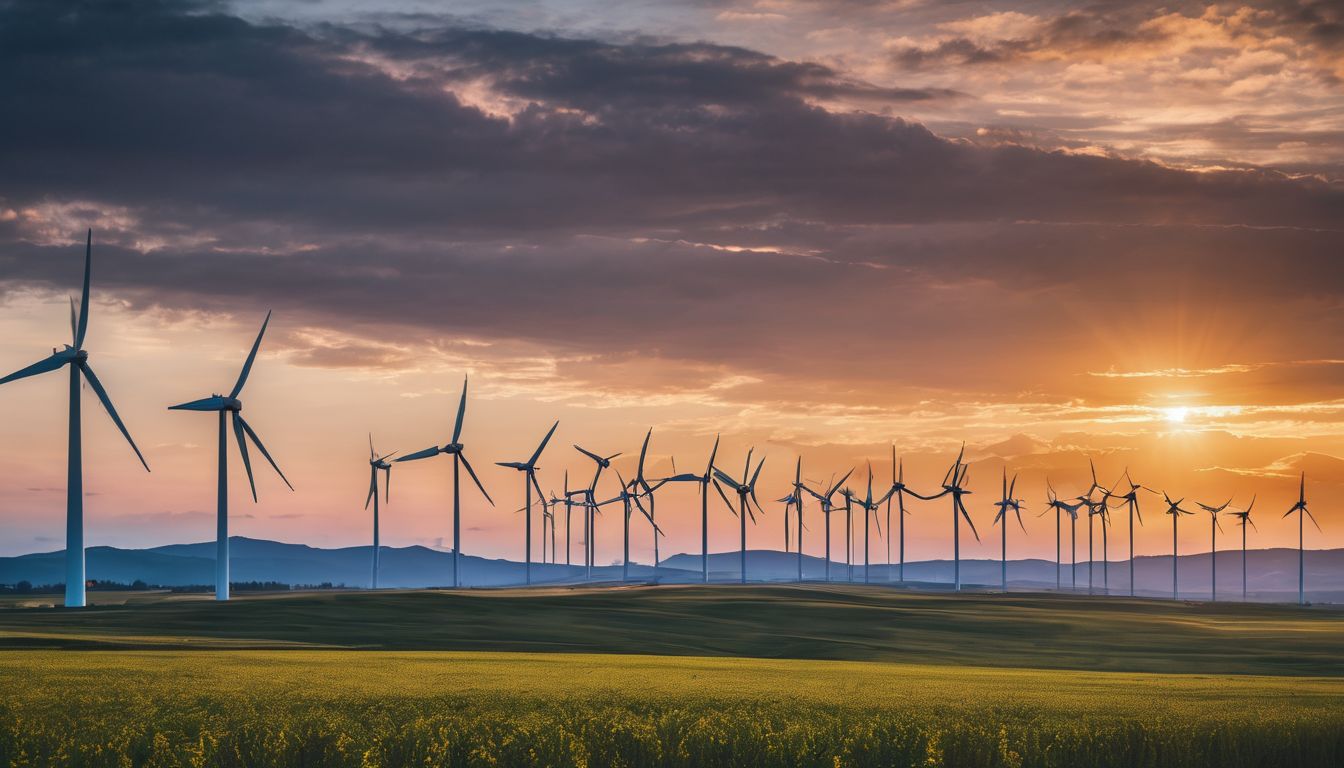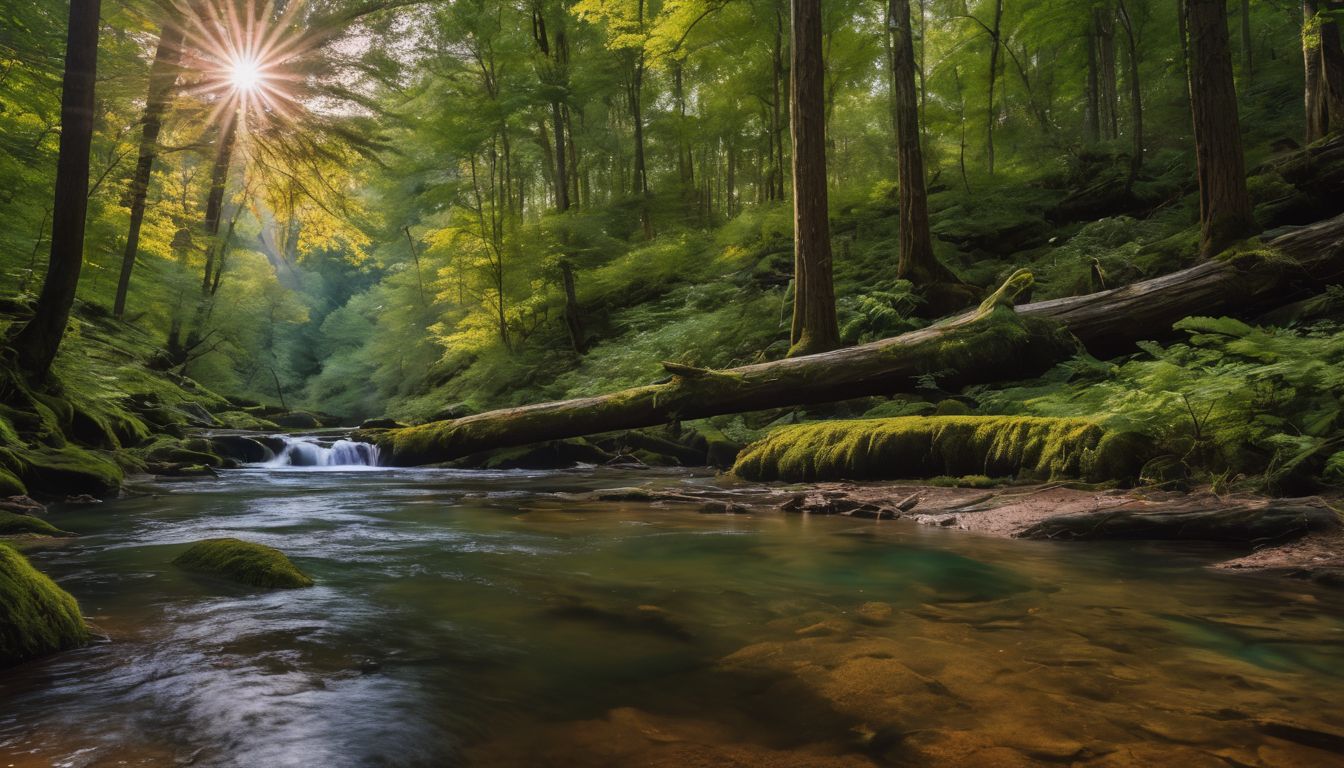Delving into the realm of green buildings can be quite the eye-opener, stirring a blend of admiration and curiosity about how we might embark on our own path to sustainability. It seems that many amongst us share this quandary but take heart – a thoughtfully curated tour can reveal an abundance of insights.
You may find it intriguing that an estimated 39% of global carbon emissions are attributed to buildings. Our forthcoming article intends to shepherd you through the nuances of organising an enlightening and motivating green building excursion.
Immerse yourself in what promises to be an enriching exploration!
Key Takeaways
- Research and select eco-friendly buildings, aiming for LEED-certified structures or those known for their sustainable design.
- Devise a detailed itinerary that includes an efficient transportation plan using public transit, carpooling or other green methods to reduce the tour’s carbon footprint.
- Make all necessary reservations and acquire permits beforehand to ensure access to the chosen green buildings on your tour date.
- Engage actively during the visit by dressing comfortably, taking notes, asking questions about energy efficiency and low-impact development, and observing building guidelines.
- Share your findings with others to promote awareness of sustainable practices, continuing to learn about advancements in green building and applying these insights into everyday living.
What is a Green Building?
A green building is designed and constructed with sustainability in mind, using environmentally friendly materials and energy-efficient practices. It focuses on reducing its environmental impact during and after construction.
Sustainable design and construction
Sustainable design and construction stand at the heart of every green building. We focus on creating structures that not only reduce their environmental impact but also enhance the comfort and health of those who use them.
By integrating renewable energy sources like solar panels, we ensure buildings draw less power from the grid, leaning towards a more self-sufficient existence. Our incorporation of low-impact development techniques helps to preserve natural water cycles and improve stormwater management.
Choosing environmentally friendly materials is another critical aspect we pay attention to during construction. These materials are often recycled or sourced from sustainable supplies, reducing deforestation and pollution.
Green roofs have become a staple in our projects; they provide insulation, reduce heat absorption, and create habitats for local wildlife while adding aesthetic value. Every step taken is a stride towards eco-friendly architecture that champions energy-efficient design without compromising functionality or beauty.
Energy efficiency
Energy efficiency is a key feature of green buildings. Incorporating energy-efficient design and technologies helps to reduce the overall energy consumption of a building, resulting in lower utility costs and decreased environmental impact.
By using efficient HVAC systems, LED lighting, smart thermostats, and high-performance insulation, green buildings can significantly decrease their energy usage while still maintaining comfortable interior conditions.
In addition to reducing operational expenses, energy-efficient features contribute to a healthier indoor environment by minimising pollutants and enhancing natural ventilation. Implementing sustainable building practices supports our commitment to conservation and environmental stewardship by striving for a more eco-friendly future without sacrificing comfort or functionality.
Environmentally friendly materials and landscaping
Environmentally friendly materials and landscaping play a crucial role in the sustainability of green buildings. Choosing eco-friendly building materials, such as recycled steel, sustainably sourced timber, and energy-efficient glass, significantly reduces environmental impact.
Landscaping with native plants minimises water usage and supports local biodiversity. Implementing these features contributes to lower resource consumption and promotes healthier indoor and outdoor environments.
Incorporating environmentally friendly materials and landscaping in our green building tour will provide insights into sustainable construction practices. Witnessing first-hand the use of solar panels, green roofs, permeable pavement, and rainwater harvesting systems will inspire us to adopt similar eco-friendly solutions in our own spaces.
Benefits of Green Buildings
“Green buildings offer lower energy costs, improved indoor air quality, and reduced environmental impact. These benefits make them a sustainable and eco-friendly choice for environmentally conscious individuals.”.
Lower energy costs
Green buildings are designed to lower energy costs by incorporating energy-efficient systems and technologies. By utilising strategies such as efficient insulation, LED lighting, and renewable energy sources like solar panels, these eco-friendly structures reduce electricity consumption and ultimately minimise utility bills for occupants.
Implementing smart thermostats and high-efficiency HVAC systems further contribute to the reduction of energy usage, making green buildings a financially viable option in the long run.
In essence, green buildings utilise environmentally friendly construction materials and sustainable design techniques that significantly decrease the reliance on non-renewable resources while cutting down operational expenses related to energy consumption.
Improved indoor air quality
Green buildings prioritise indoor air quality, ensuring that occupants breathe clean and fresh air. Sustainable design features such as proper ventilation systems, non-toxic building materials, and integrated green spaces contribute to healthier indoor environments.
These strategies help reduce the presence of pollutants like volatile organic compounds (VOCs) and improve overall well-being. Implementing these principles in construction benefits everyone involved by creating a conducive living or working environment while upholding environmental responsibility.
To ensure optimal indoor air quality, sustainable buildings often incorporate efficient HVAC systems, natural airflow designs, and advanced filtration methods. Through these measures, green buildings provide a breath of fresh air for occupants while minimising the impact on the environment.
Reduced environmental impact
Green buildings are designed to have a reduced environmental impact. They achieve this through energy efficiency, the use of environmentally friendly materials and landscaping, and sustainable design and construction practices.
The result is lower energy costs, improved indoor air quality, and a smaller carbon footprint.
Choosing eco-friendly architecture and green construction methods not only benefits the environment but also creates healthier living spaces for occupants. Embracing low-impact development and using LEED-certified building materials further supports sustainable building practices that protect our planet while promoting high-performance buildings for future generations.
Planning Your Green Building Tour
Research and select the buildings to visit, create a schedule and transportation plan, and make necessary arrangements and reservations for a successful tour. Find out more about how you can plan your green building tour by reading the full article.
Researching and selecting buildings to visit
- Utilise online resources such as green building exhibitions or websites
- Look for LEED – certified buildings in your area
- Seek recommendations from local environmental organisations or architectural firms
- Consider visiting environmentally smart buildings with low-impact development
- Explore eco-friendly architecture and high-performance buildings for inspiration
Creating a schedule and transportation plan
When planning a green building tour, begin with creating a detailed schedule and transportation plan. This will help ensure that you can visit all the intended buildings efficiently and in an environmentally friendly manner. Consider the following:
- Research the locations of the green buildings you wish to visit and map out their proximity to each other.
- Identify public transportation options, such as buses or trains, that can be used to travel between the buildings.
- If public transport is not feasible, look into carpooling with fellow tour participants or using eco-friendly transportation alternatives like bicycles or electric vehicles.
- Plan your itinerary to minimize travel time and fuel consumption while allowing enough time for exploration and learning at each building.
- Consider the environmental impact of your chosen transportation method and opt for the most sustainable option available.
- Make any necessary reservations or arrangements for transportation well in advance to ensure smooth logistics on the day of the tour.
Making necessary arrangements and reservations
After creating a schedule and transportation plan for our green building tour, it’s time to make necessary arrangements and reservations. Here’s what you need to do:
- Contact the buildings on your list to confirm tour availability and any specific requirements for visiting.
- Ensure that you have all the necessary permits or permissions required for entry into the buildings, especially if they are private property.
- Check if there are any fees for visiting the buildings and make the necessary arrangements to cover these costs.
Tips for a Successful Green Building Tour
Dress for the weather and wear comfortable shoes. Take notes and ask questions during the tour to learn as much as possible. Respect building guidelines and take pictures without disturbing the environment.
Educate others about sustainable building practices that you learn on your tour. Continue to implement green practices after your tour is over.
Dress appropriately
Select clothing suitable for the weather and comfortable enough for walking. Wear closed-toe shoes for safety and mobility, and consider bringing a reusable water bottle to stay hydrated throughout the tour.
Be mindful of wearing attire made with sustainable or environmentally friendly materials to align with the principles of green buildings.
Now let’s explore “Take notes and ask questions” to make the most out of your green building tour.
Take notes and ask questions
During the tour, we should take detailed notes on the green building features and ask questions to gain a deeper understanding of its sustainable design. We can document specific strategies for energy efficiency, environmentally friendly materials used in construction, and any unique landscaping practices.
Asking questions about the building’s LEED certification or low-impact development measures will help us comprehend the environmental smart choices made during its construction.
Engaging with our guides and fellow tour participants by asking insightful questions promotes learning and knowledge sharing. This interactive approach fosters a better understanding of eco-friendly architecture while building connections within our community of like-minded individuals.
Respect the environment and building guidelines
When visiting green buildings, it is crucial to respect the environment and adhere to building guidelines. This means staying on designated paths, disposing of waste properly, and refraining from damaging any eco-friendly features.
By following these guidelines, we contribute to preserving the sustainability of these inspiring structures for future generations.
Besides being mindful of our surroundings during the tour, it’s also essential to support sustainable practices even after the visit. Implementing eco-friendly choices in our own lives and communities helps us play an active role in reducing environmental impact while promoting a greener future for everyone.
Educate others about sustainable building practices
Educating others about sustainable building practices is essential for spreading awareness and promoting environmentally friendly construction. By sharing our knowledge and experiences from the green building tour, we can inspire others to adopt energy-efficient design, eco-friendly materials, and low-impact development in their own projects.
Encouraging a shift towards high-performance buildings not only benefits the environment but also contributes to lower energy costs and improved indoor air quality. It’s crucial to engage with our communities and advocate for sustainable building practices, empowering others to make informed choices that support conservation and environmental smart buildings.
Implementing sustainable building practices entails embracing innovative solutions such as environmentally friendly materials, energy-efficient design, and low-impact development strategies.
Follow up and continue to learn and implement green practices.
After educating ourselves about sustainable building practices, it’s crucial to follow up and continue learning and implementing green practices. This means staying informed about the latest advancements in eco-friendly architecture, energy-efficient design, and environmentally friendly buildings.
It also involves seeking out opportunities to incorporate low-impact development strategies into our own living or working spaces. By joining green building conferences, participating in self-guided tours of high-performance buildings, and exploring innovative green building materials, we can stay proactive in advancing our knowledge and commitment to environmental conservation.
Continuing to learn and implement green practices is an ongoing journey that requires dedication and a willingness to adapt as new technologies emerge. As environmentally conscious individuals supporting conservation efforts, we have the power to inspire others by setting an example through our actions rooted in sustainability.
Conclusion
In conclusion, planning a green building tour involves careful research and selection of buildings to visit. Creating a schedule and transportation plan is essential for an efficient and enjoyable experience.
Making necessary arrangements and reservations in advance will help ensure a smooth tour day. Remember to dress appropriately, take notes, ask questions, respect the environment, and educate others about sustainable building practices during your tour.
Finally, follow up on your learning by continuing to implement green practices in your everyday life.
FAQs
1. What is a green building tour?
A green building tour is an organised visit to high-performance buildings that feature eco-friendly architecture, energy-efficient design, and low-impact development.
2. Can I do a self-guided tour of green buildings?
Absolutely! You can plan a self-guided tour to explore various high-performance and energy-efficient structures at your own pace.
3. Are there tours available during green conferences?
Yes, many green conferences offer tours as part of their agenda where you can see innovative eco-friendly architecture firsthand.
4. What should I look for when planning a tour of green buildings?
When planning your tour, focus on buildings with notable eco-friendly features such as sustainable materials, energy-saving designs and technologies that contribute to low-impact development.





